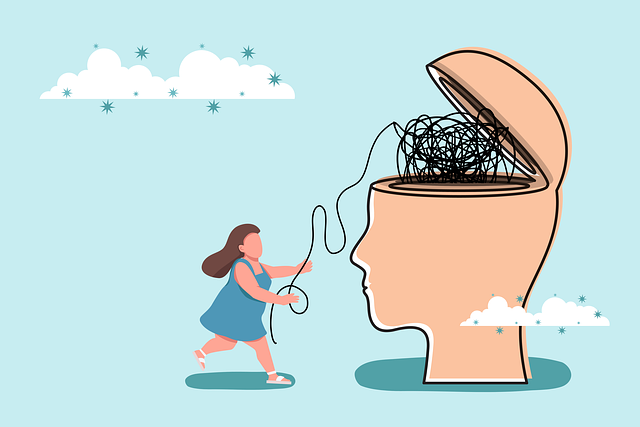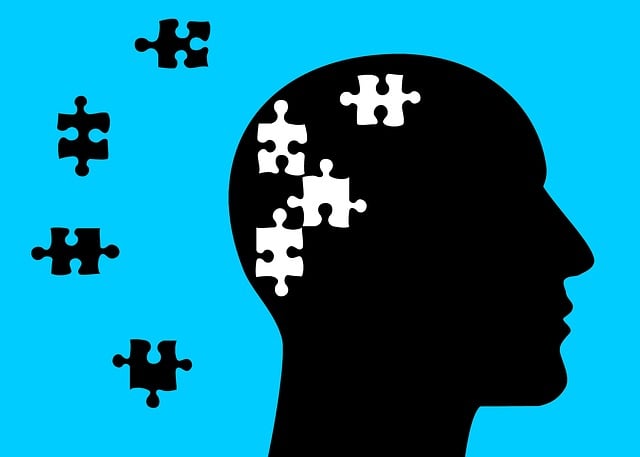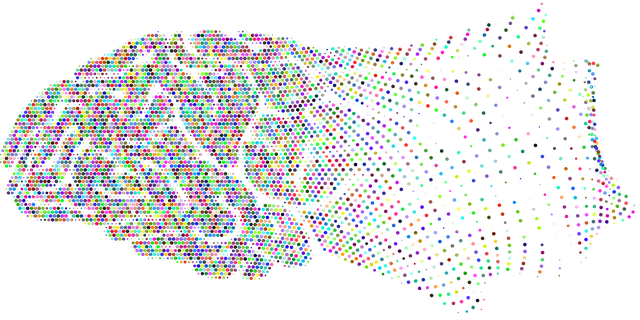Early recognition of mental health issues in young children by teachers and parents is crucial for effective therapy, targeting subtle behavioral changes. First responders play a vital role in prompt intervention using tailored techniques like cognitive behavioral therapy (CBT) and mindfulness exercises. Therapy promotes mental wellness and resilience in both children and first responders, addressing age-specific challenges and high-stress environments. Supportive environments, including warm settings for therapy and self-care programs for first responders, enhance emotional processing and coping abilities, ensuring their well-being.
Mental wellness promotion is a vital aspect of fostering healthy, happy communities. This article explores key strategies for recognizing early signs of mental health issues in young children and implementing effective interventions. We delve into the critical roles of therapy for both children and first responders, providing insights on enhancing resilience and coping mechanisms. Additionally, we discuss creating supportive environments that nurture optimal mental wellness, with a specific focus on tailored approaches for therapy for young children and first responders.
- Recognizing Early Signs of Mental Health Issues in Young Children
- The Role of Therapy for Children and First Responders
- Strategies for Promoting Resilience and Coping Mechanisms
- Creating Supportive Environments for Optimal Mental Wellness
Recognizing Early Signs of Mental Health Issues in Young Children

Recognizing mental health issues early on in young children is crucial for effective therapy and support. First responders, such as teachers and parents, play a vital role in this process by being attuned to subtle changes in behavior, mood, or overall functioning. Children may not always express their feelings verbally, so observing patterns and symptoms like excessive irritability, withdrawal from social activities, or sudden drops in academic performance can be key indicators. Early identification allows for prompt intervention, which could prevent the escalation of issues like anxiety or stress-related disorders.
Therapy for young children often involves tailored techniques to address specific mental health concerns. Anxiety relief strategies, for instance, might include cognitive behavioral therapy (CBT), while stress reduction methods such as mindfulness exercises can empower kids to manage their emotions effectively. By implementing these approaches, first responders can contribute significantly to a child’s overall mental wellness and resilience.
The Role of Therapy for Children and First Responders

For young children, therapy plays a pivotal role in fostering mental wellness by providing them with a safe space to express their emotions and work through challenges unique to their age group. Early intervention through therapy can help address issues such as anxiety, trauma, or behavioral problems, which, if left unaddressed, may escalate into more severe mental health concerns later in life. This is particularly crucial given that children’s brains are still developing, making them susceptible to the lasting impacts of unprocessed trauma and stress.
First responders, on the other hand, often bear the brunt of emotional strain due to their high-stress work environments. Regular therapy sessions can serve as an effective burnout prevention strategy for these individuals, helping them process traumatic events, manage stress, and maintain resilience. Incorporating mental health policy analysis and advocacy into this support system is essential, ensuring that first responders have access to adequate resources and services. Moreover, mental wellness journaling exercises can be a valuable tool for both children and first responders, offering a means to introspect, process experiences, and develop coping mechanisms.
Strategies for Promoting Resilience and Coping Mechanisms

Promoting resilience and effective coping mechanisms is essential for both young children and first responders dealing with stressful situations. Early intervention through therapy can be a powerful tool to build emotional resilience in children, helping them navigate challenges and develop healthy coping strategies. This could involve incorporating empathy-building strategies, such as active listening and perspective-taking, into their routine interactions. These exercises foster an understanding of emotions, enabling children to recognize and express their feelings effectively.
For first responders, self-awareness exercises and emotional regulation techniques are valuable assets. Regular practices like mindfulness meditation can help manage stress levels and enhance coping abilities. By prioritizing these strategies, individuals in high-pressure roles can improve their mental wellness, ensuring they remain equipped to respond effectively during critical situations while maintaining their overall well-being.
Creating Supportive Environments for Optimal Mental Wellness

Creating supportive environments is pivotal to fostering optimal mental wellness, especially among vulnerable populations like young children and first responders. For therapy sessions involving young children, a warm, playful, and safe space designed to alleviate anxiety and promote comfort can significantly enhance their willingness to engage in therapeutic activities. This involves incorporating age-appropriate materials, ensuring cultural sensitivity in mental healthcare practice, and tailoring the approach to cater to each child’s unique needs and experiences.
Similarly, for first responders who often bear witness to traumatic events, cultivating a supportive environment within their workplace is crucial for their mental health recovery. Implementing self-care routine development programs can help them manage stress, boost confidence, and process emotions effectively. These initiatives may include structured debriefing sessions, peer support networks, and accessible resources that address the unique psychological challenges they face on a regular basis.
Mental wellness promotion requires a multifaceted approach, encompassing early identification of issues in young children, effective therapy for both children and first responders, and strategic resilience-building. Creating supportive environments that foster optimal mental health is paramount. By integrating these key elements – from recognizing subtle signs to implementing evidence-based practices – we can significantly enhance the well-being of our youth and those who serve them. This holistic approach ensures a brighter, healthier future for all.









